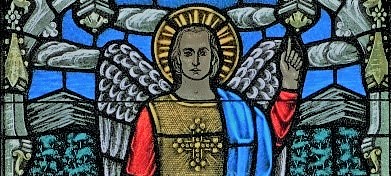Things we should know
In the Christian religion, angels are spiritual beings who serve God. The Bible teaches that angels were created by God, but it doesn’t say when they were created. They are depicted as praising God at the time of creation, which suggests that they existed prior to that moment (cf. Job 38:4-7).
The Greek word translated into English as “angel” simply means messenger, which describes the role they have as God’s servants (cf. Heb. 1:14). More specifically, the Bible depicts angels bringing messages to God’s people (e.g. Luke 1:26-27), protecting God’s people (e.g. Psalm 91:11), and bringing judgment upon God’s enemies (e.g. Matt. 13:49-50).
Many people today are interested in guardian angels and whether or not the Bible teaches that God assigns every person, or every believer, a guardian angel. Some Bible verses seem to suggest special angelic assignments to individuals (e.g. Matt. 18:10), and churches (e.g. Rev. 2-3) and nations (e.g. Dan. 10:21). In the New Testament, angels appear as the ministers of God and the agents of revelation (e.g. in Matt. 1:20 to Joseph, in Matt. 4:11 to Jesus, in Luke 1:26 to Mary, in Acts 12:7 to Peter); and Jesus speaks of angels as fulfilling such functions (Mark 8:38, 13:27), implying in one saying that they neither marry nor are given in marriage (Mark 12:25). Angels are most prominent in the book of Revelation.
The New Testament only hints at the idea of the angelic hierarchy (e.g. Michael is the archangel), although more elaborate forms of their organization appeared later in Christian history. The distinction of good and bad angels is recognized in Scripture; for example, a good angel is Gabriel (cf. Luke 1:19).
Examples of evil angels include Abaddon or Apollyon (Rev. 9:11), Beelzebub (Mark 3:22) and Satan (Mark 1:13); ranks are implied: archangels (Michael, Jude 9), principalities and powers (Rom. 8:38; Col. 2:10), thrones and dominions (Col 1:16). Angels also appear together, such as in groups of four or seven (Rev 7:1).
In Revelation 1-3 we meet with the “Angels” of the Seven Churches of Asia Minor. These may be guardian angels, standing to the churches in the same relation that the “princes” in Daniel stand to the nations; practically the “angels” are personifications of the churches.
Other angelic appearances in Scripture: The angel Gabriel appeared to Mary in the traditional role of messenger to inform her that her child would be the Messiah, and other angels were present to herald his birth. An angel appeared at Jesus’ tomb, frightened the Roman guards, rolled away the stone from the tomb, and later told the myrrh-bearing women of Jesus’ resurrection. Two angels witnessed Jesus’ ascent into Heaven and prophesied his return. When Peter was imprisoned, an angel put his guards to sleep, released him from his chains, and led him out of the prison. Angels fill a number of different roles in the book of Revelation. Among other things, they are seen gathered around the Throne of God singing the“Holy, holy, holy”hymn(Rev. 4-5).


